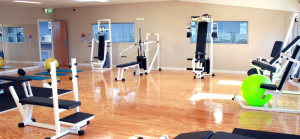Controlling the perfect temperature with air conditioning for improved office productivity
Room temperature, office productivity and employee health are of concern to both UK employers and their employees. Employers want healthy and productive workers, and employees want a comfortable work environment that allows them to reduce sick days, stay on the job and be productive. Everybody wants the same thing. The problem is that many people are unsure how to proceed in achieving the optimum temperature at the workplace on a consistent basis.
For many UK employers, being diligent about office space temperature and humidity in an area serviced by dated infrastructure is an expense they would rather avoid. With an efficient heating and cooling system, maintaining the correct, more productive temperature actually reduces energy expenditures. However, if the system is dated, not maintained regularly and in general disrepair, temperatures will fluctuate and energy costs will soar.
For the office environment to be most effective, it takes cooperation. The business must provide a reliable, steady heating and cooling source that is well maintained and has operating thermostats. The employees cannot set the temperature to their personal tastes but must dress accordingly, knowing what the temperature will be. Once the system is working, the office manager sets the thermostat to the recommended temperature. Many offices now secure the thermostats on premises, or operate them centrally, to prevent the wasteful practice of changing the settings.
The peak performance temperature
There have been many studies about what constitutes the peak performance temperature for an office environment. Northumbria University studied the effect of office temperature at 16 different locations. 400 employees responded to the university’s questionnaire.
Interestingly, when the office temperature was colder than comfortable, productivity plummeted in the afternoon. Workers reported that they were low on focus and distracted.
The Northumbria study parallels the findings of Cornell University. Cornell discovered, in its survey, that office temperatures of 20 degrees celsius or lower resulted in an unmistakable spike in the number of errors made by employees. The most employee mistakes were made between the hours of 1pm and 4pm. The suggestion from this report is that if the temperature is not acceptable, employees experience drowsiness in mid-afternoon.
Furthermore, a study from Finland indicates that the best temperature for maximum productivity is actually 21 degrees celsius. That is higher than most offices in the US and UK set the temperature. However, if your office heating and cooling system is not in good repair, aiming to keep the temperature at 21 degrees may be an energy eater.
At the same time, employees are wary of dated heating systems. It’s possible that if the vents are not cleaned regularly, there is the chance that employees may get ill, and their productivity will suffer - impacting the business and the workload of those left behind.
Employees who are disgruntled with the temperature may also start bringing their own space heaters to work during the Winter. That opens up another issue for energy efficiency, as well as a number of safety issues.
Other factors
Other factors that affect the individual’s response to office temperature are; the season, the health of the individual, the clothing workers wear to work, their age, the climate and the humidity. All of these factors play a role in achieving maximum productivity.
Season - For example, people tend to be more productive when the season dictates more daylight. Natural light is a great inducement. The short, dark and cold days of Winter are less productive than the long, bright, warm days of Summer.
Clothing – During the Winter, workers should wear layers of clothing rather than adjust the thermostat. The same is true during the Summer but to a lesser degree.
Climate and humidity – A relative humidity level of 40 percent is optimal for high performance. This can be challenging is some climates during Winter and Summer. However, 29 degrees celsius at a low humidity can be surprisingly comfortable. When the air is humid, a humidifier can be used to provide relief. Many offices are building humidifiers into their central heating and cooling systems to provide maximum humidity control.
The productivity of office workers is most certainly affected by their work environment. Maintaining the correct temperature and correct humidity level will increase productivity and reduce sick days. However, it takes a committed management and a responsible workforce to create and maintain this environment.
If we concentrate on the goal, which is to increase productivity and efficiency, the happiness of every office staff can improve the bottom line. In order to ensure maximum office productivity, keep that heating and cooling system clean, service it regularly and monitor the thermostat. If you actively keep an eye on your office temperature and the comfort of your employees, you’ll be rewarded with a motivated and productive workforce.
For more information about our air conditioning services for commercial properties and company offices, get in touch with Oxford Air Conditioning by calling 01235 524411. You can also contact us online.


